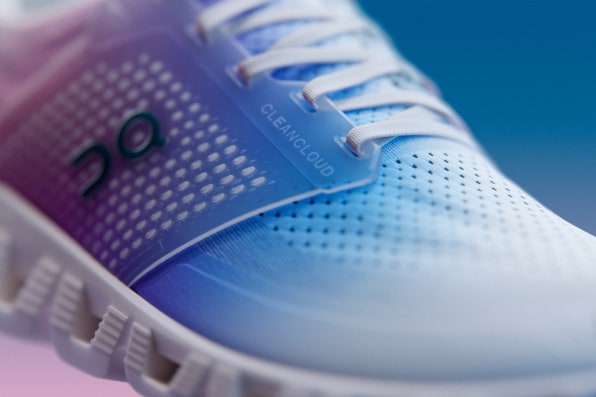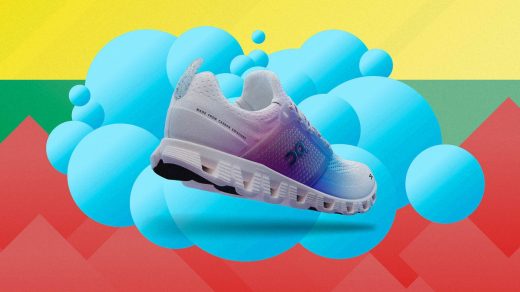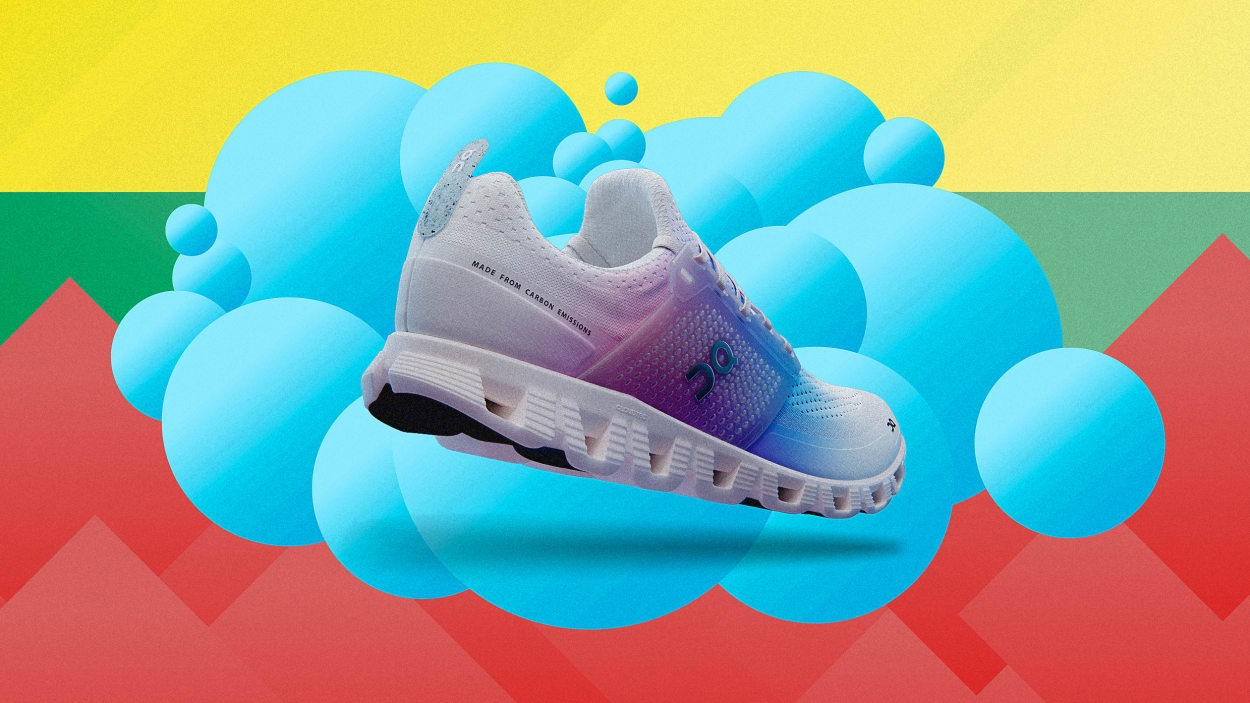This running shoe cost $500,000 to make—and could be in stores by 2028
Captured carbon emissions are starting to show up in everything from jet fuel to diamonds, clothing, concrete, and even food. Using the gases, which can be transformed into industrial chemicals and other foundational materials, can both help to reduce climate pollution and avoid the use of new fossil fuels in products. But making an emissions-based product can be a challenge. Take the case of the Swiss running shoe brand On, which spent years working on a new midsole made from carbon emissions for its sneakers.
Each prototype of the sneaker made with the new material, called CleanCloud, cost around half a million dollars to produce, On cofounder Caspar Coppetti told the audience today at Fast Company’s Most Innovative Companies Summit.

As the company began experimenting with making new foam for the midsole, it struggled to get the yields and quality it needed for such a high-tech product. The team was close to giving up, Coppetti says, when it discovered LanzaTech, a company that uses genetically edited bacteria to turn waste gases from industrial plants into ethanol, which can then be converted into ethylene for products like EVA or ethylene vinyl acetate foam.
Turning carbon dioxide into ethanol is “like making beer, except instead of using sugar, we use waste gases like emissions from a steel mill or refinery,” Jennifer Holmgren, LanzaTech’s CEO, said at the event. The company diverts emissions from manufacturing sites into its own bioreactors, where they are fermented into ethanol by microorganisms.

The next step, turning the ethanol into ethylene, is more challenging. The existing supply chain in the EVA industry doesn’t yet have the necessary infrastructure in place. To make a handful of prototypes of sneakers with the new midsole, the partners had to build small-scale chemical plants. (Chemical manufacturer Borealis, another partner, transformed the ethylene into EVA foam.) Getting each step in the production process to work was difficult, and at several points, they had to start over from scratch.
On is continuing to refine the process. To bring a new sneaker to market, it will have to scale up manufacturing, which could involve working with other brands to aggregate demand to support building new factories. The upper of the shoe could also be made of polyester that’s produced from captured emissions; LanzaTech has already worked with other partners, including Zara and Lululemon, to make small runs of polyester products derived from its captured emissions. (Polyester is easier to produce because those factories already have ethanol-to-ethylene conversion tech in place.) Once production of the midsole scales up, Coppetti says it’s feasible for the cost of a CleanCloud shoe to drop from $500,000 a pair to something closer to $160, the cost of its current sneakers. “We hope that we can scale this fast enough that by 2028, we can make all our products out of captured carbon or another waste material,” he said.
In the meantime, On is exploring other innovative approaches to embedding sustainability in its products, including a sneaker that’s sold with a subscription model and designed to be fully recycled into a new shoe when it’s returned. “Most of the technologies that we need to survive are here, but they’re not available at scale,” Coppetti told the audience. “So this is now where a lot of investment needs to go. We can create the consumer demand, we can showcase it; and ideally, we do it at scale so that hopefully others follow suit.” By the end of the decade, he says, the company wants to bring back most or all of its used products to loop the materials back into new ones.
(20)



